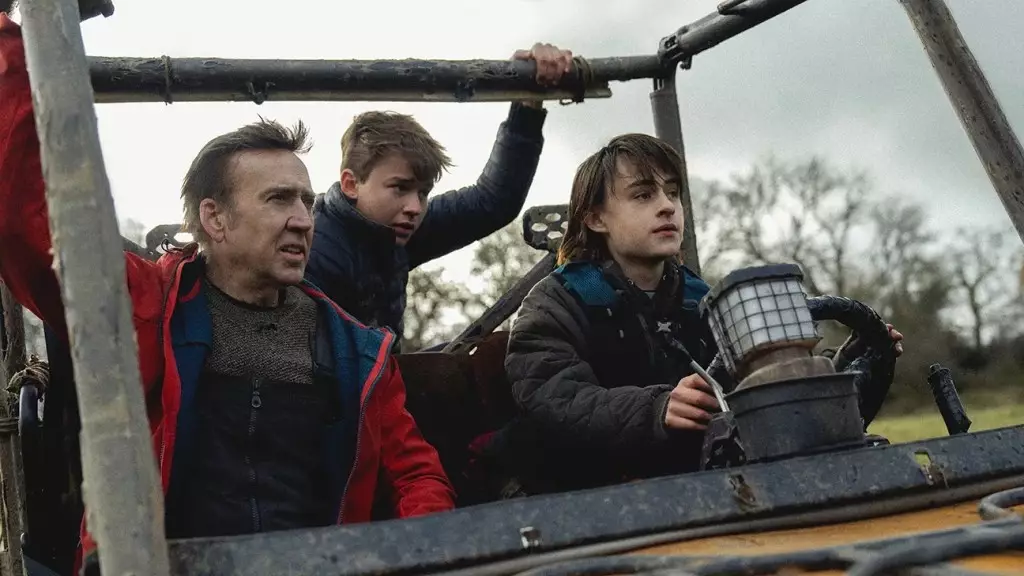In the film Arcadian, director Benjamin Brewer and writer Mike Nilon take on the challenge of presenting a post-apocalyptic world decimated by an unspecified catastrophic event. With a cast including Nicolas Cage, Jaeden Martell, and Maxwell Jenkins, the film promises a gripping narrative of survival in a desolate landscape filled with nocturnal terrors. However, despite the potential for a thrilling and intense story, Arcadian falls short, delivering a disorienting experience that fails to terrify viewers.
The film opens in the midst of chaos, thrusting viewers into a world already in ruins. The story revolves around a family’s struggle for survival in the aftermath of a catastrophic event, focusing on the bond between Paul and his two sons, Joseph and Thomas. While the premise of a barren world teeming with unknown dangers is intriguing, the execution falls flat, leaving viewers disoriented and disconnected from the characters’ plight.
One of the film’s critical flaws lies in its overuse of disorienting cinematography. The excessive shaky cam and underlit scenes, intended to create a sense of dynamism and urgency, instead hinder the viewer’s ability to fully engage with the action on screen. Moments that should be thrilling encounters with the unknown become frustrating and muddled, undermining the film’s potential to create a sense of suspense and impending doom.
Furthermore, Arcadian’s reliance on ambiguous storytelling and lack of world-building detracts from the overall impact of the narrative. The creatures that haunt the family lack clarity and coherence in their design, robbing them of the menace they should possess. Without a clear understanding of the world in which the characters exist, viewers are left struggling to connect with the story and the struggles of Paul, Thomas, and Joseph.
The film’s characters also suffer from underdevelopment, with Martell and Jenkins struggling to portray complex roles in the face of relentless adversity. Their decision-making and interactions with the environment feel unrealistic and strained, detracting from the film’s attempt to portray a realistic struggle for survival. Without well-rounded characters to anchor the story, Arcadian loses its emotional impact and fails to engage viewers on a deeper level.
Arcadian’s disorienting cinematography, lack of world-building, and underdeveloped characters contribute to a film that falls short of its potential. Despite a promising premise and a talented cast, the movie fails to deliver a truly terrifying and immersive post-apocalyptic experience. In future projects, the filmmakers would do well to focus on creating a cohesive visual style, developing a rich and engaging world, and crafting well-rounded characters to drive the narrative forward. Only then can they truly captivate audiences and deliver a cinematic experience that leaves a lasting impact.

